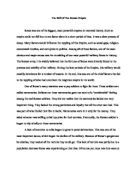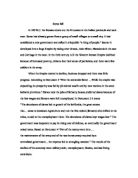“40,000 INCAS GOVERNED A TERRITORY WITH 10 MILLION SUBJECTS SPEAKING OVER 30 DIFFERENT LANGUAGES”
Government and Administration
The Incas kept lists of their kings (Sapa Inca); we know of Pachakuti Inka Yupanki (reign 1438-63 CE), Thupa Inka Yupanki (reign 1471-93 CE), and Wayna Qhapaq (the last pre-Hispanic ruler, reign 1493-1525 CE). Two kings may have ruled at the same time, and queens may have had some powers, but it is unclear in the Spanish records. The Incas mummified their rulers; the mallquis (mummies) were kept in the Coricancha temple, and were in ceremonies, given offerings of food and drink, and ‘asked’ for their opinion on political incidents.
The Inca ‘government’ was based on grouping and joining units. The ruler was at the top; then ten noble families (panaqa); then ten more noble families; then, at the bottom, local administrators who oversaw ayllu (settlements).
Local administrators reported to 90 regional administrators, who reported to a governor responsible for each quarter of the empire. These four governors reported to the Inca ruler in Cusco. The heirs of governors were kept as prisoners at the Inca capitol to ensure loyalty. The Inca elite kept the most important political, religious, and military roles within the empire, and were called by the Spanish the orejones (big ears) - they wore large ear spools to show their status. Military soldiers and administrative centres (e.g. Tambo Colorado, Huánuco Pampa, and Hatun Xauxa) were placed around the empire to ensure control.
Censuses were taken (for tax justification); populations were divided into groups of multiples of ten (Inca maths was nearly the same as the system we use today). Tax was paid in food and drink, precious metals, textiles, and exotic items (e.g. feathers, dyes, and spondylus shell), or manual labourers (mit’a service). Farmland and animals were divided into three uses; production for religion and the gods, for the Inca ruler, and for the farmer’s own use. Locals helped to build and maintain roads which spread across the empire. They used quipu to keep track of statistics - a combination of knots and strings which was transportable and accurate.
The Incas forced their religion / administration on conquered civilisations to add them to the empire more efficiently. However, they also brought better storage for food and drink, roads, military aid, and luxury items.
Cusco
The Inca capital was the centre of the empire and had a peak population of 150,000. The gold and emerald encrusted ‘Temple of the Sun’ Coricancha temple controlled Cusco (built by Pachakuti). The layout of the capital was took on the shape of a puma; the royal city of Pumachupan was the tail; the temple of Sacsahuaman was the head.
“MOST SPLENDID WERE THE TEMPLES BUILT IN HONOUR OF INTI AND MAMA KILYA - THE FORMER WAS LINED WITH 700 2KG SHEETS OF BEATEN GOLD”
Religion
Inca rulers made regular pilgrimages to Tiwanaku where two shrines were built to Inti (the Sun god) and Mama Kilya (the moon goddess. These two gods were represented by large artworks of precious metal in the Coricancha temple in Cusco, which were worshipped by the second most important person after the king; Willaq Umu (the High Priest of the Sun). Therefore, the Inca religion was concerned with controlling nature and avoiding its disasters (e.g. earthquakes, floods, and droughts) which brought the natural cycle of change into existence; the passing of time including death and renewal which the Incas called pachakuti after their greatest architect.
Huacas (sacred sites) were created, utilising mountaintops, caves, and springs that could be used to take astronomical observations. Religious events took place according to movements of the sun, moon, and Maya (Milky Way). The two most sacred Inca sites were the Island of the Sun at Titicaca, and Pachacamac (a temple city) with a large wooden statue of the named god, which was considered an oracle, and brought travellers from all over South America to worship. Shamans were an important part of Inca religion - Cusco had 475 - the most important being the yacarca, the ruler’s personal advisor.
Inca rituals involved worship, offerings to the gods (e.g. food, drink, and precious materials), sacrifices - both animal and human (including children) - to calm and honour the gods.
The Incas forced their religion on locals by building other temples and sacred sites; they also took sacred relics from conquered civilisations and kept them in Cusco - they were considered hostages to ensure cooperation.
Architecture and Roads
The Incas built large structures, walls, and fortifications using finely shaped blocks which fitted together perfectly - no bonding was needed. By incorporating clean lines, shapes, and natural features, it easily withstood the earthquakes that constantly hit the area. Beside the aesthetic look, the shapes were used to recognise Inca domination throughout the empire.
Goods were transported using roads that spread across the empire, mainly using llamas. Their roads covered over 40,000 kilometres, allowing easy movement of armies and trade items.
Art
Inca art was mainly in metalwork (gold, silver, or copper), ceramics, and textiles. Pottery and textiles was often used to pay taxes; artwork represented different communities, and their cultural heritage.
Art from precious metals and super-soft vicuña wool was made for nobles, and only the ruler could keep vicuña herds.
The Incan textiles, ceramics, and metalwork was far superior to any other Andean culture, even the expert craftsmen of the Moche civilisation.
Collapse
The ruling Incas were often unpopular with their people - the empire was created on, and sustained by, force. The Spanish conquistadores (led by Francisco Pizarro) took advantage of this during the mid-16th century. By the time the Incas faced their greatest challenge, they had not yet reached their ultimate point. Rebellions were frequent, and they were at war with Ecuador, where a second Inca capital (Quito) had been created. Even worse; they were in and epidemic of European diseased (e.g. smallpox) which had spread from Central America faster than the invaders who brought it. This killed between 65 and 90% of the population, including Wayna Qhapaq in 1528, and Waskar and Atahualpa, two of his sons, fought in a civil war for control of the empire just when the European treasure-hunters arrived. This combination of factors - rebellion, disease, and invasion - brought the shocking downfall of the mighty Inca Empire; the largest and richest ever seen in the Americas.
The Inca language is still spoken today by around eight million people; there are also some of the buildings and artefacts which have survived the destruction of conquerors, looters, and time. Although they are a tiny proportion to the extensive treasures that have been lost, they are an unquestionable ‘witness’ to the wealth, creativity, and cultural achievements of the great, but 95 year old empire.








